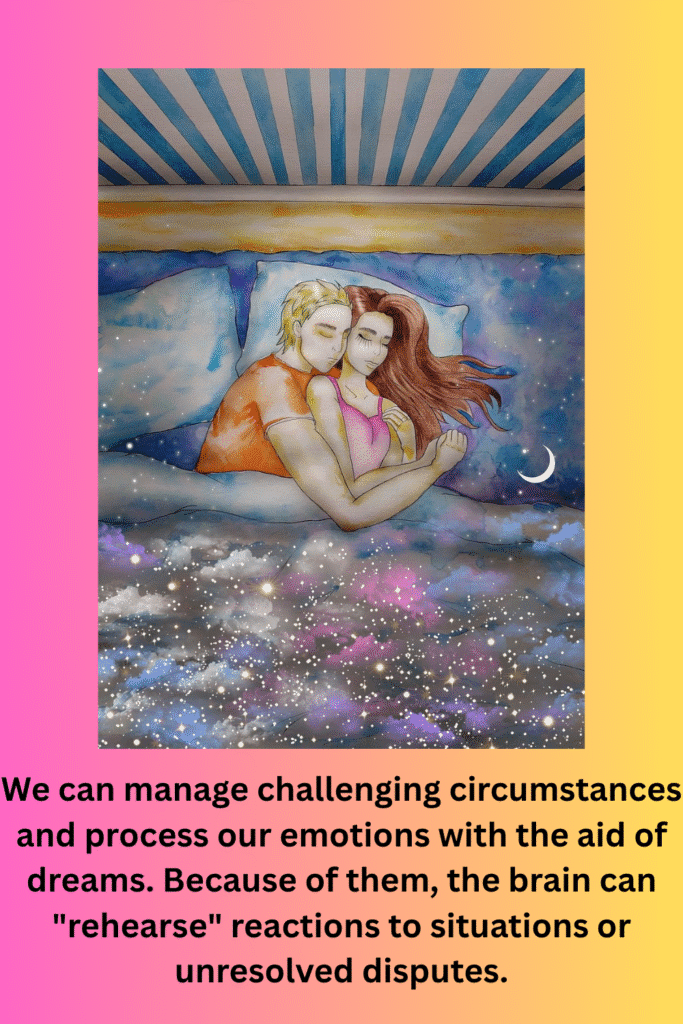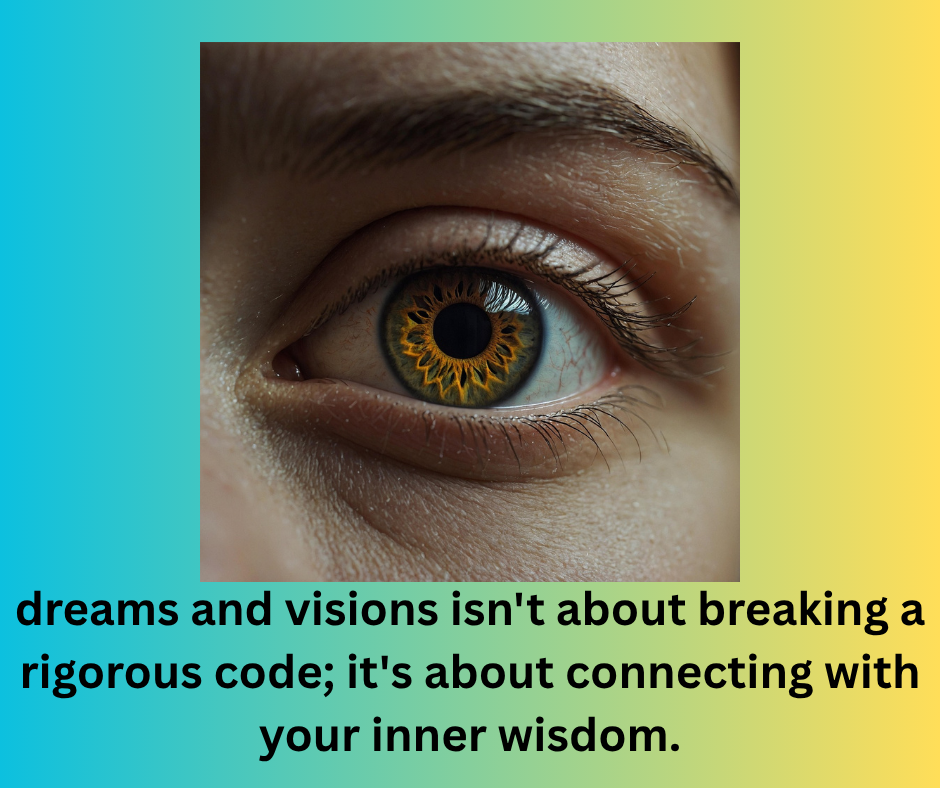Understand Dreams and visions have fascinated humanity for centuries. Whether they appear in the middle of the night or during moments of stillness and clarity, they often feel powerful, mysterious, and deeply personal. But how do you understand dreams and visions? Are they just random firings of the brain—or do they hold deeper meaning?

In this article, we’ll explore how to interpret dreams and visions from scientific, psychological, and spiritual perspectives. You’ll also discover tools and techniques to help you decide what your subconscious—or perhaps something even higher—is trying to tell you.
Table of Contents
What Are Dreams and Visions?
- Dreams and visions, while frequently used interchangeably, can be distinct experiences:
- Dreams typically occur during sleep, particularly during the REM (Rapid Eye Movement) stage. They are a mixture of emotions, thoughts, images, and sensations.
- Visions, on the other hand, can occur while awake or during meditation, prayer, or deep focus. They are often described as intense mental images or spiritual insights.
Understanding both dreams and visions requires a blend of self-awareness, intuition, and analysis.
Why Do We Dream?
According to science, dreams are supposed to serve a number of functions:
1. Emotional Processing
We can manage challenging circumstances and process our emotions with the aid of dreams. Because of them, the brain can “rehearse” reactions to situations or unresolved disputes.
2. Memory Consolidation
REM sleep is when the brain collects and organizes short-term memories, incorporating useful information while rejecting unneeded data.
3. Problem-Solving
Dreams can help some people solve real-world difficulties. This is referred to as incubation dreaming, in which the subconscious mind works on concerns left unsolved throughout the day.
4. Creativity and Insight
Artists, writers, and inventors have famously credited their dreams with creative breakthroughs—proof that dreams can tap into a deeper level of inspiration.
Visions: A Window Into the Inner or Spiritual World
Understand Dreams and Visions,While science is still exploring the nature of visions, they are often viewed as spontaneous flashes of insight, often with spiritual or symbolic meaning. In many traditions, visions are believed to be divine messages, intuitive insights, or guidance from a higher source.
For example:
- In Hinduism, visions during meditation or dreams are called darshana, representing spiritual revelations.
- In Christian and Islamic texts, visions are often messages from angels or divine beings.
- In indigenous cultures, visions may come during rituals or fasting and are considered sacred guidance.
How to Interpret Dreams and Visions: Step-by-Step Guide
Understanding dreams and visions takes practice. Here’s a proven method to help you decode their meaning:
1. Record Immediately
The first step is to write down your dream or vision as soon as you experience it. Include as much detail as possible:
- People, places, symbols, emotions
- Colors, numbers, sounds
- Actions or conversations
Dreams fade quickly, so recording them immediately helps capture the essence.
2. Identify Key Symbols
Understand Dreams and Visions often speak in symbolic language. A snake, a key, or a door may not mean what they appear to be. For example:
Water can represent emotions or the subconscious.
• Flying can symbolize freedom or escape.
• Being chased might indicate worry or avoidance.
Examine common dream symbols—or, better yet, consider what they signify to you personally.
3. Examine Your Emotions
What emotions did the dream or image evoke in you?
Fear might suggest unresolved conflict or stress.
• Peace can represent agreement or acceptance.
• Confusion could indicate internal turmoil or life instability.
Grasp the emotional heart of a message requires a grasp of feelings.
4. Connect to Your Waking Life
Ask yourself:
What was my life like prior to this dream or vision?
• Do I need to make a choice or avoid a situation?
•Could this have anything to do with my relationships, work, or spirituality?
Dreams and visions frequently reflect existing conflicts or ambitions.
5. Look for Repetition
Are certain themes, people, or locations recurring in your dreams? Understand Dreams and Visions,Repetition suggests that your subconscious—or higher self—is emphasizing a specific message.
The Role of Intuition in Understanding Dreams
While dream dictionaries and psychology can be helpful, the most powerful dream interpreter is your own intuition. Trust how the dream made you feel. Ask yourself:
- “What does this symbol mean to me?”
- “What is my heart telling me about this experience?”
- “Is this a warning, reassurance, or lesson?”
Meditation, prayer, or quiet reflection can help unlock hidden meanings.

Types of Dreams and Their Meanings
The following are some typical dream kinds and their possible meanings:
1. Lucid Dreams
You realize that you’re dreaming, and you have the ability to manipulate the dream. This could provide healing or insight and implies increased self-awareness.
2. Recurring Dreams
These frequently indicate unresolved problems or lessons that require attention. Until you deal with the underlying feeling or issue, they keep coming back.
3. Prophetic or Precognitive Dreams
These seem to predict future events. While controversial, many cultures and individuals report such experiences.
4. Nightmares
Often linked to stress, trauma, or fear, nightmares may reflect a part of yourself that you’re suppressing or ignoring.
5. Visitation Dreams
Understand Dreams and Visions,Dreams of deceased loved ones or spiritual beings are often described as more vivid and emotionally impactful. These may provide comfort, closure, or guidance.
Tools to Help You Understand Dreams and Visions
Here are some practical tools to deepen your interpretation:
- 📝 Dream Journal: Keep a notebook by your bed and write dreams daily.
- 🧘♂️ Meditation: Helps access subconscious insights and calm the mind.
- 📚 Dream Symbol Books: Use these as reference, but always trust your intuition first.
- 🌿 Spiritual Guidance: Consider prayer, astrology, or spiritual counseling if you believe dreams have divine messages.
Final Thoughts
Understand dreams and visions isn’t about breaking a rigorous code; it’s about connecting with your inner wisdom. Whether seen via a psychological lens or as spiritual communication, dreams and visions can provide:
• Clarity in life choices
• Emotional release and healing
• Creative insight and problem-solving
• Stronger connection to self and the world
So the next time you have a vivid dream or a compelling vision, don’t ignore it. Jot it down. Reflect. Ask questions. You may be getting a message that will transform your life.